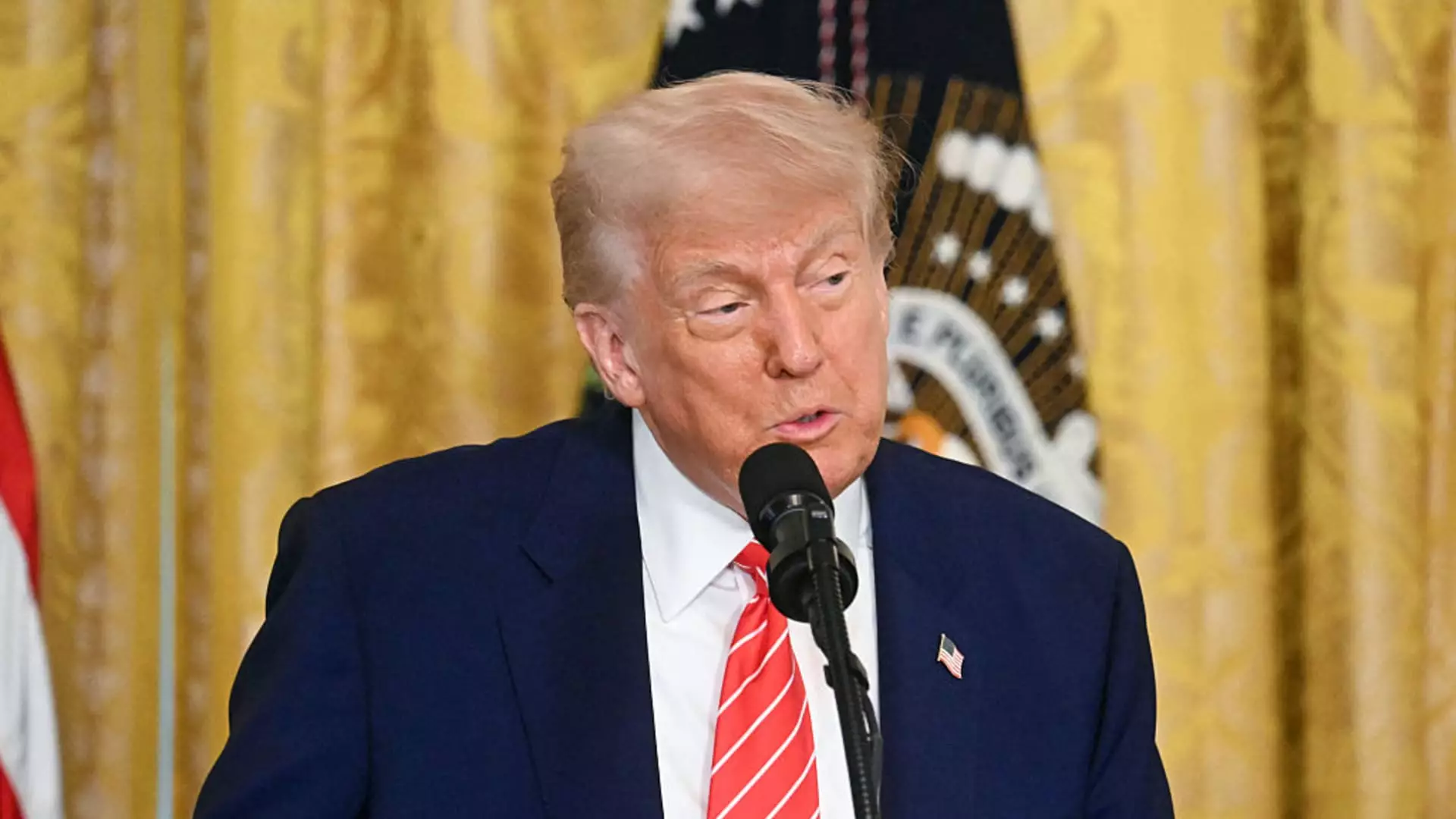Donald Trump’s recent revival of the “most favored nation” policy raises significant questions about its implications for the American healthcare landscape. Intended to link U.S. drug prices to lower rates in other countries, this policy’s execution is fraught with uncertainty and risk. While on the surface, it appears to be a bold step toward reducing exorbitant drug costs for American consumers, the reality may be far more precarious. With pharmaceutical companies already bracing for impact, one must consider whether such measures will genuinely benefit patients or merely serve as political theater.
Foreign Nations and the American Burden
At the heart of Trump’s initiative is the assertion that foreign countries have been “free riding” off American consumers. This narrative is powerful, playing to a sense of national pride but also fostering a detrimental divisiveness. While it is true that Americans often pay considerably more for prescription drugs than other developed nations, linking this disparity directly to the actions of foreign governments oversimplifies a complex market. Pharmaceutical pricing is significantly influenced by various factors, including R&D costs, regulatory hurdles, and market dynamics. Claiming that a simple policy change can rectify years of inequity is, at best, naive.
Moreover, as the Trump administration pushes forward with this policy, it must confront the age-old truth in economics: price controls can lead to unintended consequences. Should drug manufacturers face significant revenue reductions due to these adjustments, as many economists fear, we could see a decrease in innovation. A landscape where drug companies are disincentivized to invest in groundbreaking treatments ultimately harms patients requiring new therapies.
Regulatory Overreach and Industry Response
The pharmaceutical industry’s trepidation about the “most favored nation” policy is emblematic of the broader challenges associated with excessive regulation. Drugmakers have warned that such policies risk crippling their profit margins, inevitably impacting their ability to finance novel drug development. While it is essential to make medicines affordable, these regulations threaten to destabilize an already delicate balance within the pharmaceutical marketplace.
Additionally, the industry’s concerns regarding potential retaliatory actions—like pulling out of less profitable international markets—could further exacerbate the existing problem of high drug prices. Experts from institutions such as USC have warned that instead of generating savings for American consumers, the policy may lead to a scenario where the domestic market is left with fewer options, ultimately defeating the original purpose of the initiative.
The Question of Effectiveness
One must also scrutinize whether the “most favored nation” policy is an effective means of lowering drug costs. Historical evidence suggests that such measures often struggle to deliver the promised benefits. Critics have stressed that price controls typically do not alter the fundamental mechanics of the global drug market. In an era where 70% of pharmaceutical profits are generated in the United States, the notion that delegating drug prices abroad can sustainably benefit American patients is dubious at best.
Even if the policy can navigate legal challenges and industry pushback, it may not achieve its intended results. With American consumers already expressing dissatisfaction over rising medication costs—over 75% of adults consider them unaffordable—an ineffective policy would do nothing but deepen the frustration that many feel.
Political Theatrics vs. Genuine Solutions
Currently, Trump’s administration appears poised to leverage the “most favored nation” policy as a political tool, to draw attention away from larger systemic issues in the healthcare sector. Instead of fostering a meaningful dialogue around collaborative, bipartisan solutions, initiatives like these often become politically charged spectacles, further polarizing the discourse around drug pricing.
Furthermore, while tariffs on imported medications may seem to align with the administration’s goals of revitalizing domestic drug manufacturing, they could paradoxically escalate prices for American consumers and lead to drugs becoming less accessible rather than more affordable. The risks of these policies could overshadow any short-term gains they might bring.
In a country where healthcare reform is long overdue, the focus should not just be on cutting prices but also on ensuring the sustainability and quality of medical innovation. Trump’s approach, with its bold assertions and politically charged narratives, must be tempered with a rigorous understanding of economic principles and real-world implications. In a polarized political environment, genuine solutions that prioritize the well-being of American patients must come to the forefront—before it’s too late.

